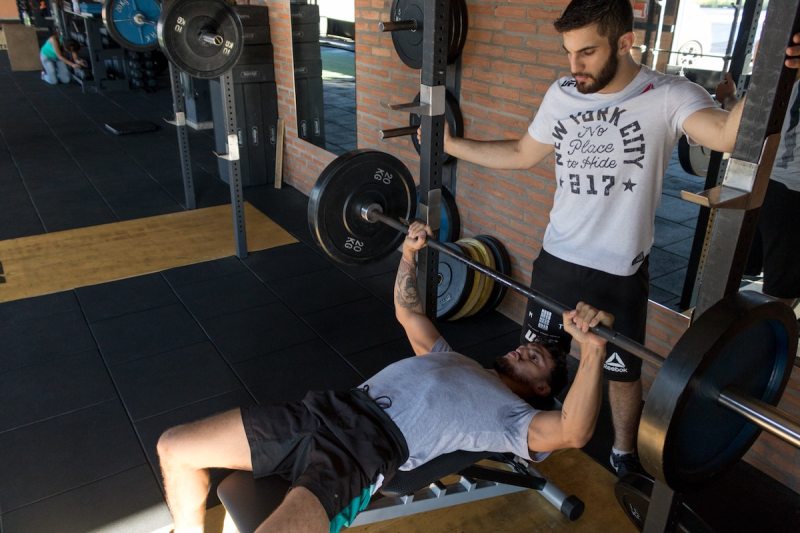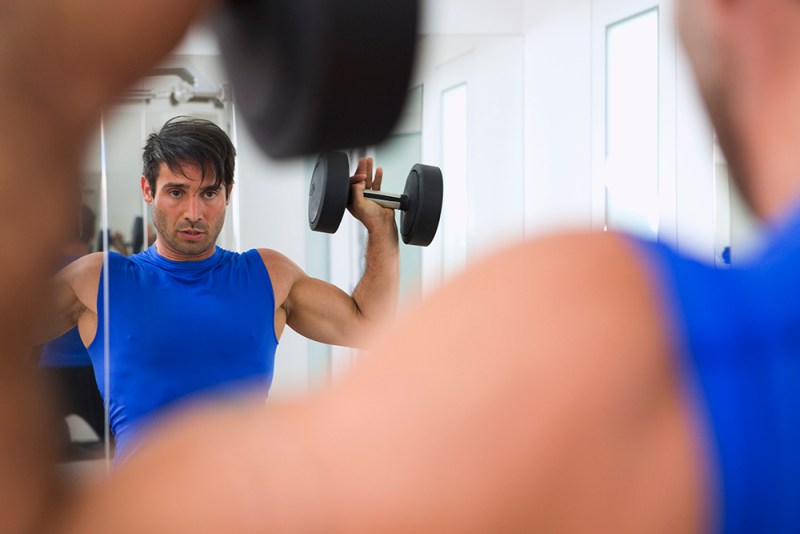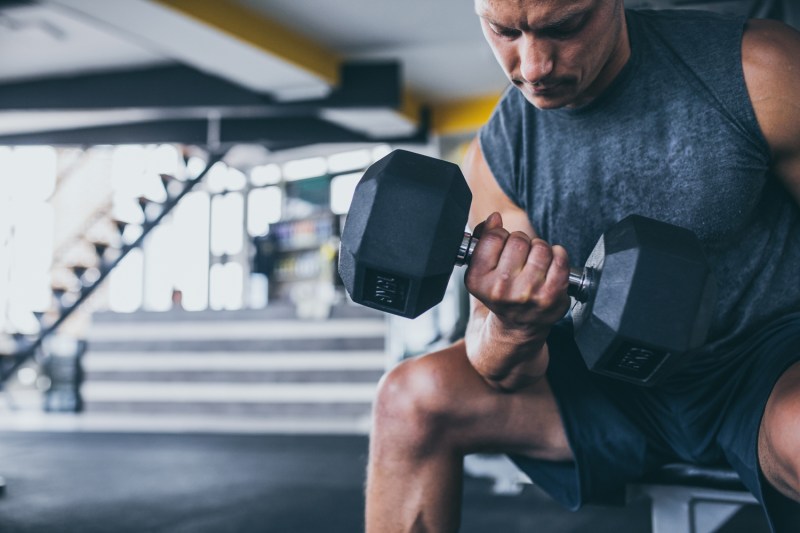If you desire to lose weight, you are not alone. Many people have a similar goal and are aware that exercise is a great way to make it happen. But should you choose cardio or weight lifting for weight loss? Or both?
While cardio exercises such as running, cycling, rowing, swimming, and stair climbing can all be great ways to burn calories, it’s also possible to lose weight by lifting weights. If you tend to gravitate towards strength training more than cardio workouts but still want to lose weight, keep reading to learn how to lose weight through strength training.
Can you lose weight lifting weights?

One of the top weight loss tips that any health and fitness expert will recommend is to incorporate exercise into your weight loss program. Most people assume that this means cardio exercise rather than strength training, as it’s somewhat counterintuitive that you can lose weight lifting weights. After all, the goal of strength training is often to build muscle mass, and if you’re increasing your muscle mass, your body weight will increase.
However, this assumption does not take into account that as long as you follow a healthy, calorie-controlled diet and do the right type of strength training workouts, you can burn calories through weightlifting workouts and lose weight at the same time.
How lifting weights can help you lose weight

Strength training can be a really effective form of exercise for fat loss and body recomposition. Here are the ways in which resistance training workouts can help you lose weight.
Lifting weights burns calories
Like any form of exercise, strength training burns calories because your muscles need energy to contract, which requires burning stored fuel (glycogen and adipose tissue) to generate ATP (cellular energy).
The number of calories you burn in a strength training workout depends on numerous factors, such as your body weight and composition, the intensity of the workout, the specific exercises you perform, and the duration or training volume of the workout.
You will burn more calories if you have a larger body size and a higher percentage of lean body mass relative to fat mass. In terms of the structure of your workout, you will burn more calories if you lift heavier loads relative to your one-repetition maximum (1RM, or the most you could possibly lift for one full rep) and take less rest. This is because both of these changes increase the intensity of the workout and elevate your heart rate, which in turn will increase your energy expenditure.
Finally, as long as the intensity doesn’t drop, the longer your resistance training workout lasts, the more calories you will burn.
Given the numerous factors at play, it’s difficult to give specific guidelines as to how many calories you will burn in a strength training workout. However, Harvard Health Publishing reports that 30 minutes of “vigorous weight lifting” burns 180 calories for a 125-pound person, 216 calories for a 155-pound person, and 252 calories for a 185-pound person.
Since “vigorous weightlifting” is difficult to quantify, you can also use metabolic equivalents (METs) for strength training activities to estimate the number of calories burned. METs represent the energy expenditure of a given activity compared to that of sitting quietly, which is equal to 1.0 MET. The Compendium of Physical Activities reports that circuit training at a moderate effort is 4.3 METs, while resistance training doing squats is equal to 5.0 METs.
Circuit training with kettlebells and aerobic exercises with minimal rest is 8.0 METs. Using these METs values and the equation for energy expenditure, you can calculate the number of calories burned while strength training based on your body weight and the duration of your workout:
Calories Burned Per Minute = METs x 3.5 x (your body weight in kilograms) / 200
For example, if you weigh 185 pounds (84 kg) and do resistance training with squats:
5 METS x 3.5 x 84 / 200 = 7.35 calories per minute.
Then, if you do a 45-minute workout, you multiply the number of calories burned per minute by 45 minutes. So: 7.35 x 45 = 331 calories.
Although this is not a ton of calories, you could certainly burn more calories if you weigh more and increase the intensity of your workouts. Because you need to burn approximately 3,500 calories to lose one pound of fat, it would take about 10 strength training workouts (about two weeks, depending on workout frequency) for you to lose one pound of body fat if you make no additional changes to your diet.
Lifting weights builds muscle mass
One of the primary benefits of lifting weights is that it can increase lean body mass by stimulating myofibrillar protein synthesis (MPS), which increases the size of your muscle fibers by reinforcing them with new proteins.
Because muscle tissue is metabolically active tissue, increasing your lean body mass can increase your basal metabolic rate, meaning that you will burn more calories throughout the day, even at rest. This will make it easier to create the calorie deficit necessary to lose weight.
Lifting weights can support healthy lifestyle choices
If you start engaging in a structured weight training for weight loss program, you might find that you’re more inclined to make healthy dietary choices to support your workout. Although this isn’t a given, many people find that they feel more motivated to eat nutritious foods and eliminate excessive sugar, alcohol, and processed foods once they start trying to optimize their physique through strength training workouts.
How to lose weight by lifting weights

The following tips can help when you begin lifting weights to lose weight:
- Be mindful of your diet and try to maintain a calorie deficit.
- Wear a heart rate monitor so you can gauge the intensity of your workouts.
- Lift the heaviest weights you can handle with proper form for 8–12 reps.
- Perform compound, multi-joint exercises.
- Consider circuit training or performing strength training exercises back to back to keep your heart rate elevated.
- Increase the frequency and duration of your strength training workouts. Aim for two to three sets of 8–15 exercises per workout, performing 8–12 reps per set.
- Supplement with cardio training for improved weight loss results and better overall health.
Can you lose belly fat by lifting weights?

In general, if you are successful with losing weight by engaging in weight lifting, then stored fat in your belly can certainly be burned as well! Unfortunately, you cannot spot reduce fat, so simply doing ab exercises will not result in you having less fat on your stomach.
Genetics determine where you tend to store fat the most, as well as where your body will burn fat first and last. Most people naturally store fat in their abdominal area, making losing belly fat a common goal. Stick to your regimen, be patient, and you will eventually start to lose belly fat.
Editors' Recommendations
- 7 killer tricep workouts to supercharge your strength training
- Experts reveal how to lose weight while you sleep
- Expert reveals the best way to build muscle with resistance bands
- How to build muscle and lose fat through body recomposition
- The best workouts for boxers to help you train like a fighter




